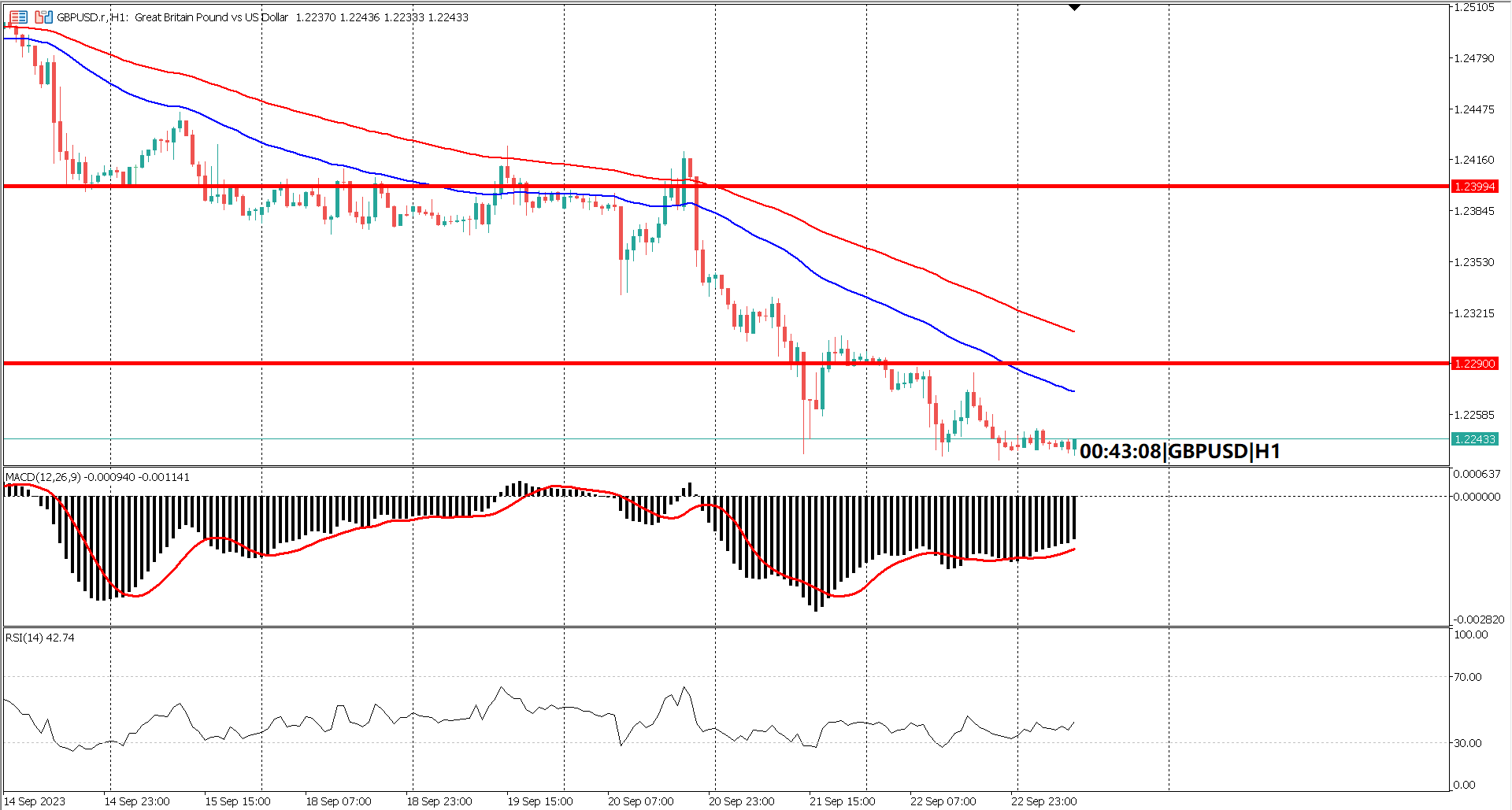
Amid the backdrop of the Federal Reserve's hawkish pivot, GBP/USD is struggling to gain traction. The Fed's signals of potential interest rate hikes and monetary tightening have boosted the allure of the U.S. dollar, leading to downward pressure on the pound. On a technical note, GBP/USD remains below the pivotal 50- and 100-hour Exponential Moving Averages (EMAs), underscoring the prevailing bearish sentiment. However, the Relative Strength Index (RSI) is hovering between 50 and 30, suggests that the pair has entered oversold territory, hinting at the possibility of consolidation or a minor retracement in the near term. 
Another significant driver impacting GBP/USD is the surge in U.S. Treasury yields. The 10-year Treasury yield, in particular, surged to 2.4% over the past week, reaching levels not seen since late 2007. This sharp rise in yields has bolstered the U.S. dollar's strength, as higher yields tend to attract foreign capital, making the greenback more appealing. As a result, the pound is facing added pressure from this macroeconomic development.
Moreover, the higher Treasury yields have had a cascading effect on borrowing costs. Notably, 30-year mortgage rates have climbed, impacting the housing market and consumer spending. This surge in borrowing costs aligns with the broader narrative of quantitative tightening, as central banks worldwide reconsider their ultra-loose monetary policies. Against this backdrop, GBP/USD traders will closely monitor key technical levels, with 1.2290 serving as immediate resistance and 1.2200 as a critical support level. The pair's ability to navigate these levels will depend on developments in U.S. monetary policy and economic data, making it essential to stay attuned to this evolving forex landscape.
In terms of technical indicators, GBP/USD currently faces resistance from the 50- and 100-hour Exponential Moving Averages (EMAs). This indicates a bearish sentiment. However, the Relative Strength Index (RSI) has entered oversold territory, suggesting a possible consolidation or minor retracement in the near future. Another reason for a bearish retracement hit is that the MACD histogram has crossed above the MACD signal line. These technical factors add layer of complexity to the pair's outlook, making it crucial for traders to closely monitor both technical and fundamental developments in the coming days.
Trading foreign exchange on margin carries a high level of risk, and may not be suitable for all investors. Before deciding to trade foreign exchange you should carefully consider your investment objectives, level of experience, and risk appetite.
Nothing contained in this website should be construed as investment advice. Any reference to an investment's past or potential performance is not, and should not be construed as, a recommendation or as a guarantee of any specific outcome or profit.
